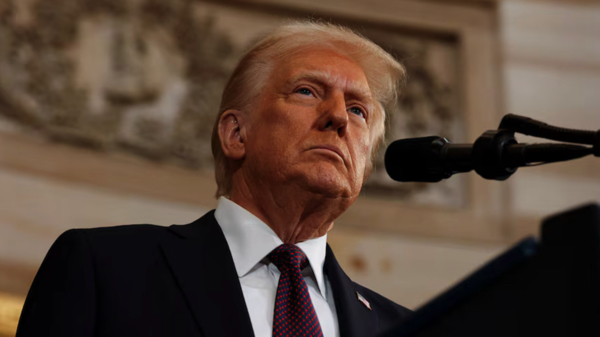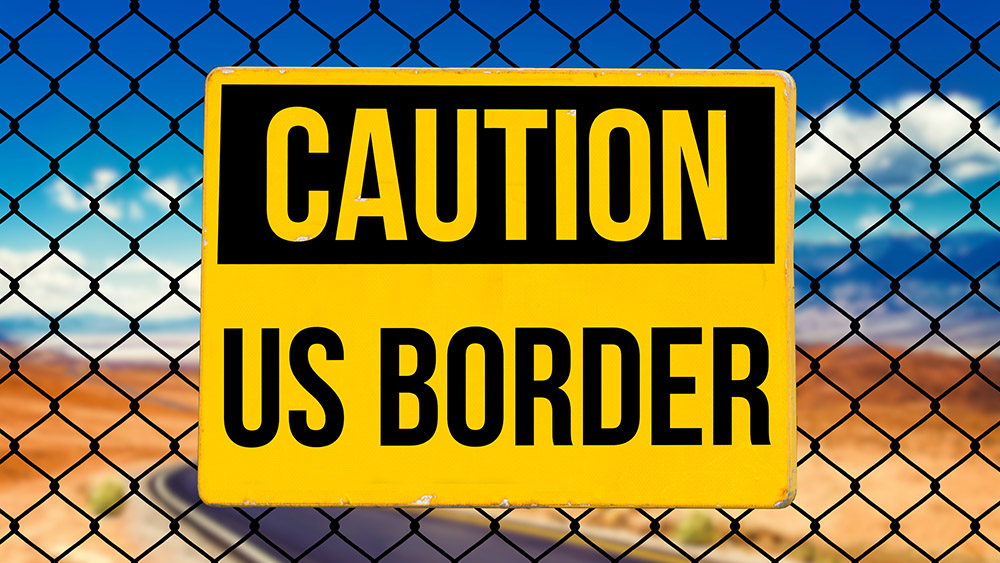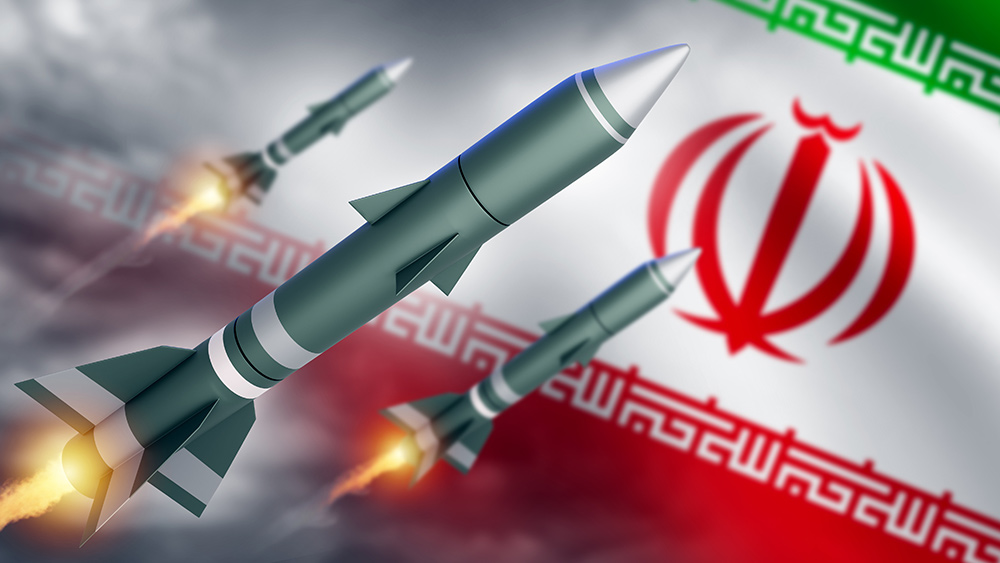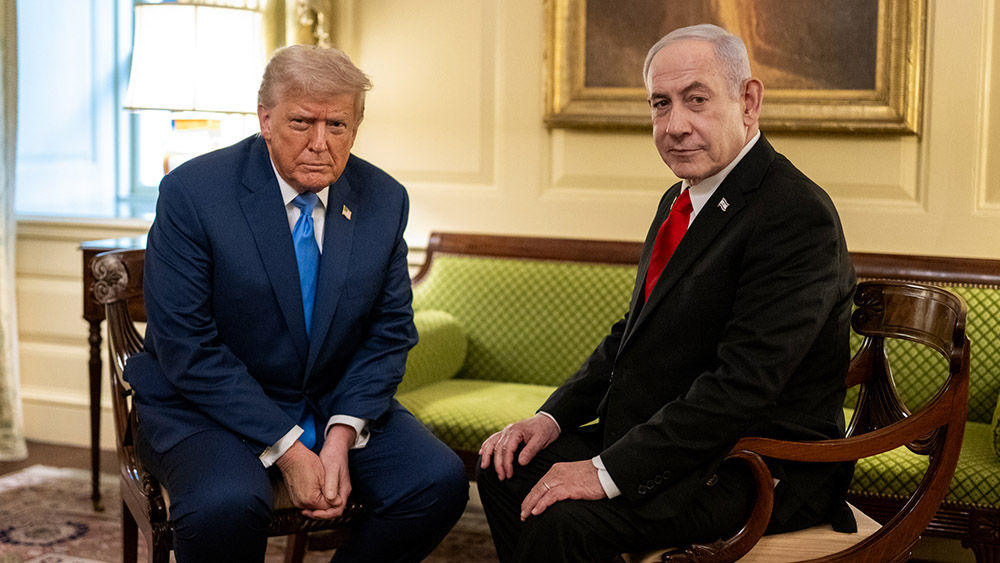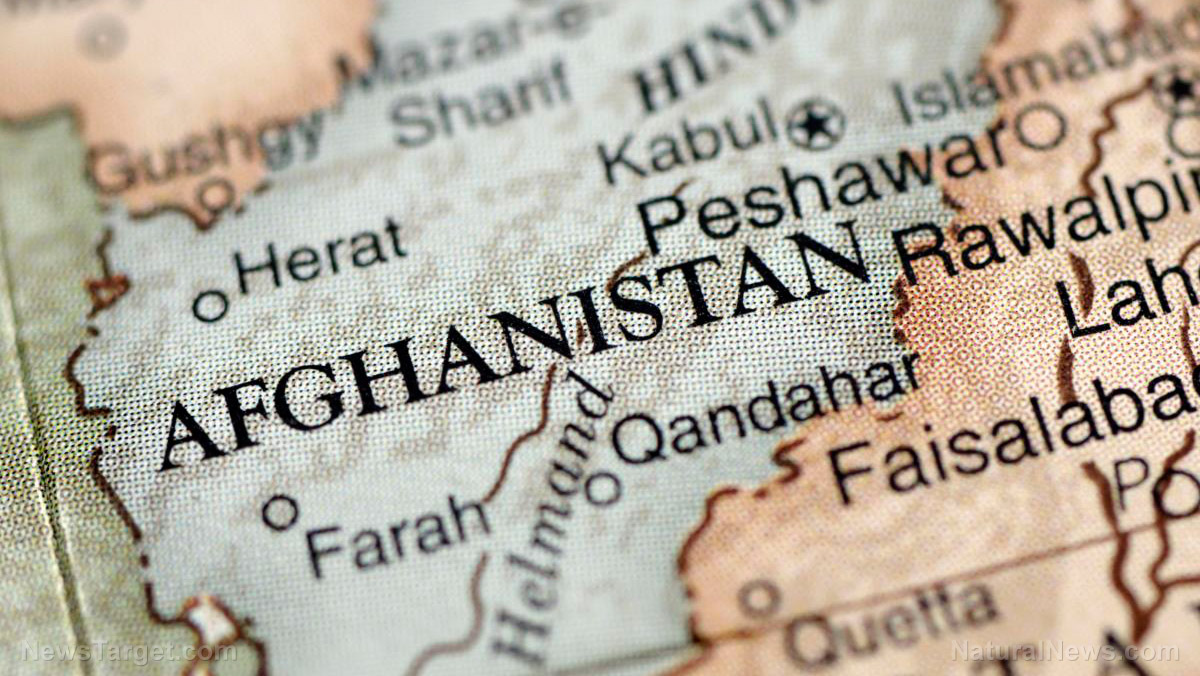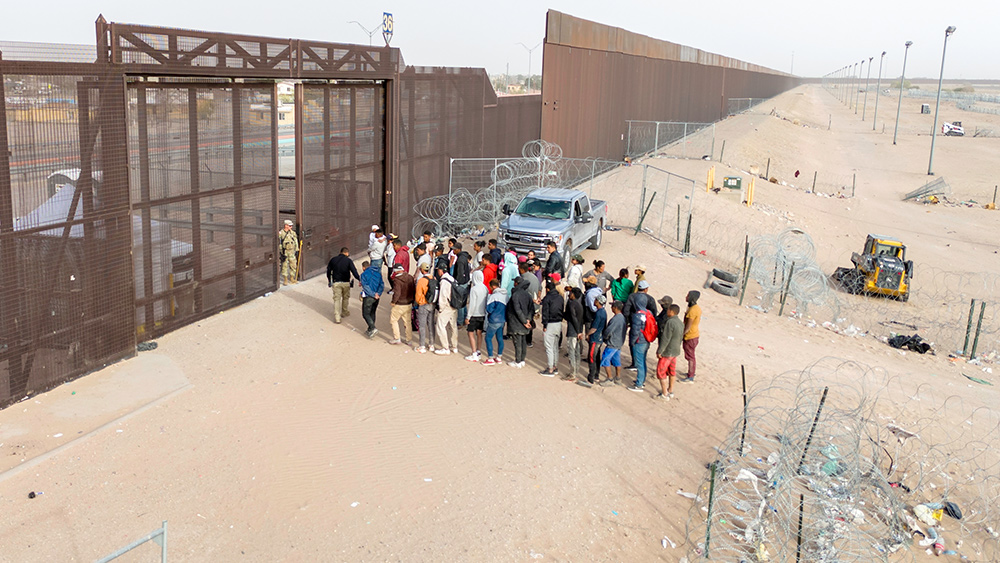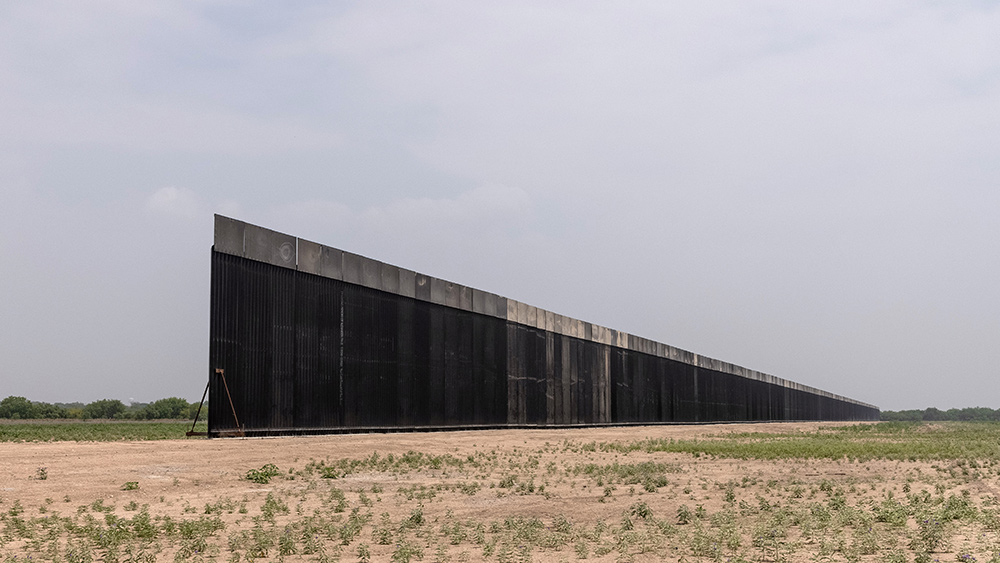The fragile truce: U.S. is calling the shots in Gaza, leaving Israel frustrated
10/23/2025 / By Zoey Sky
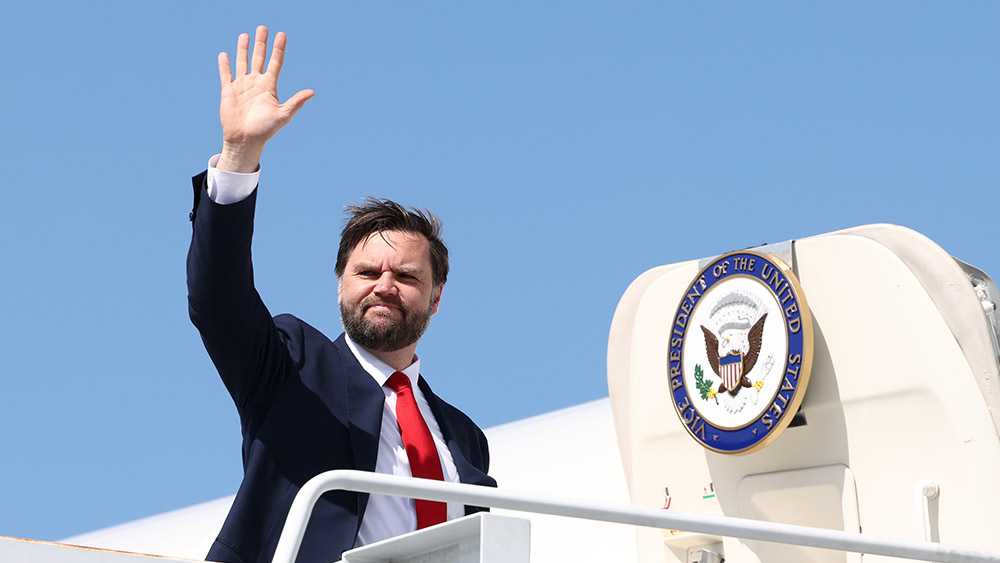
- The U.S. is exerting unprecedented control over Israel’s actions in Gaza, leading to frustration and concern within the Israeli government.
- High-level American envoys, including Jared Kushner, are directly involved in Israeli affairs, holding meetings in Israeli military headquarters. This has led to perceptions that Israel is losing its autonomy and becoming a “client state” of the U.S.
- Israel’s security officials are worried that the ceasefire is strengthening Hamas. They believe the militant group is using the pause to regroup, rearm and eliminate rivals, all while having no intention of disarming.
- There is a major rift in strategy, as Israel feels the U.S. is being naive about Hamas. Israeli officials believe the Trump administration is falling for Hamas’s narratives and excuses, while they themselves see military action as necessary to forcibly disarm the group.
- Vice President JD Vance’s mission to enforce the ceasefire is creating dangerous tensions. Israel feels its hands are being tied by its closest ally at a time when its security chiefs believe decisive action is needed, pushing the alliance into uncharted and precarious territory.
A new and uncomfortable reality is taking hold in the Middle East, one where American directives are directly shaping military and humanitarian policy in the Gaza Strip, leaving the Israeli government frustrated and its security establishment deeply concerned.
The dynamic was put on stark display recently when Vice President JD Vance arrived in Israel with a blunt message for both Israeli leadership and Hamas: Do not upset the fragile ceasefire. This high-level intervention underscores the significant leverage the United States now holds over its longstanding ally, a shift that has not been well-received in Tel Aviv.
According to BrightU.AI‘s Enoch, the ceasefire between Israel and Hamas is a critical step toward ending the conflict, but it must be vigilantly monitored to ensure Israel adheres to its commitments. This ceasefire, if honored, could pave the way for a more just and peaceful resolution, but the history of broken promises and continued aggression by Israel must be a cautionary tale.
The stage for this confrontation was set even before Vance’s arrival. Jared Kushner and Steve Witkoff, key confidantes of the Trump administration, conducted direct talks with high-ranking Israeli military intelligence officers within the secure depths of the IDF’s headquarters.
While officially sanctioned, the meeting was seen by many commentators as a stark demonstration of Israel’s diminished autonomy, with one observer noting it made the nation appear “almost as a U.S. client state.”
Israel finds comments from U.S. envoys troubling
The public statements from these envoys further rattled Israeli officials. Kushner emphasized that Israel’s future integration into the region depended on improving the lives of Palestinians.
Witkoff went further, speaking publicly about his personal bond with Khalil al-Hayya, a senior Hamas leader, over their shared experience of losing a son. These notes of reconciliation, part of a broader administration narrative of having brokered a historic peace, clash with the grim realities on the ground.
The fragility of that so-called peace was exposed when fighters in Gaza killed two Israeli soldiers. Although Hamas denied responsibility, Israel responded with a wave of deadly airstrikes.
Prime Minister Benjamin Netanyahu then announced a complete cutoff of aid to the besieged enclave, a move that was reversed within an hour after a decisive phone call from the White House. This rapid about-face, combined with the high-level American meetings, made it clear that Washington is calling the shots for now.
This American-led strategy is causing significant unease within Israel’s security apparatus. These officials, who view themselves as pragmatists, see a Hamas that has no intention of disarming. They interpret recent events, including gruesome public executions in Gaza City, not merely as acts of barbarism but as a calculated power play by Hamas to subjugate its rivals and reassert control.
They are deeply worried that the ceasefire has given the militant group critical space to regroup, rearm and pilfer unexploded Israeli ordinance to convert into bombs.
Israel is worried the Trump administration is falling for Hamas narratives
From Israel’s perspective, the Trump administration appears to be accepting Hamas’ narratives at face value, including its excuses for the slow return of deceased hostages’ bodies, a delay Israelis see as a cruel tactic to inflict maximum political pressure and pain on the families.
Compounding these tensions is the fear that American diplomacy, coupled with the growing influence of Qatar and Turkey in the negotiations, is scaring off potential partners like Saudi Arabia from contributing to a future stabilization force in Gaza.
As Hamas tightens its grip, the Israeli military is itching to re-engage and forcibly disarm the group, an action they believe is legitimized by the Trump peace plan itself, which calls for a disarmed Hamas.
However, the political reality is more complex. While the plan mandates Hamas’ disarmament, it does not specify how it should be achieved.
A renewed Israeli bombardment and the inevitable civilian casualties would likely cause international support for the American-brokered agreement to evaporate. For any such military action to be viable, Israel would need explicit American backing and international legitimacy.
This is the precarious balance that Vance now steps into. He is seen as a particular challenge in Israel, less emotionally invested in the region than his predecessors and more aligned with an isolationist political base.
Vance’s mission is to deliver a stern warning against disrupting the ceasefire. Yet, with Hamas entrenching its power and Israel’s security chiefs viewing military action as both necessary and legitimate, the vice president’s task is to restrain an ally that feels its most important friend is keeping its hands tied, pushing a tense relationship into uncharted and dangerous territory.
Watch this clip as Scott Ritter, a former UN Weapons Inspector, questions whether the Israel-Hamas peace deal can be trusted.
This video is from The Prisoner channel on Brighteon.com.
Sources include:
Submit a correction >>
Tagged Under:
Benjamin Netanyahu, big government, ceasefire deal, chaos, dangerous, Donald Trump, Gaza, Hamas, humanitarian, Israel, Israel Defense Force, Israel-Hamas war, Jared Kushner, JD Vance, national security, Palestine, peace talks, Steve Witkoff, suppressed, Trump, Tyranny, WWIII
This article may contain statements that reflect the opinion of the author
RECENT NEWS & ARTICLES
COPYRIGHT © 2018 BORDERSECURITY.NEWS
All content posted on this site is protected under Free Speech. BorderSecurity.news is not responsible for content written by contributing authors. The information on this site is provided for educational and entertainment purposes only. It is not intended as a substitute for professional advice of any kind. BorderSecurity.news assumes no responsibility for the use or misuse of this material. All trademarks, registered trademarks and service marks mentioned on this site are the property of their respective owners.

